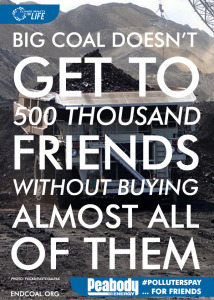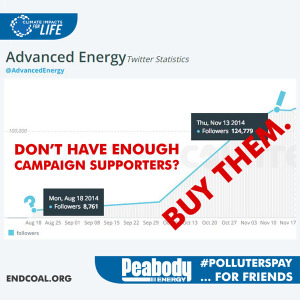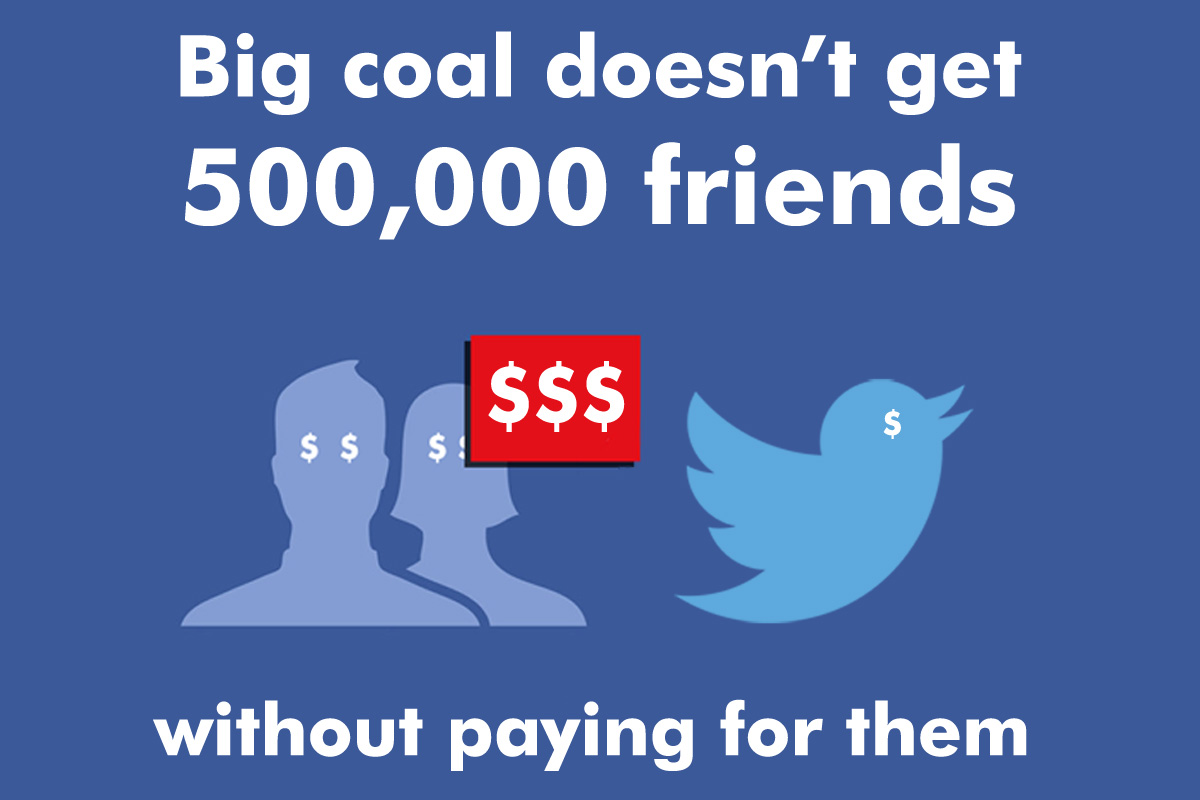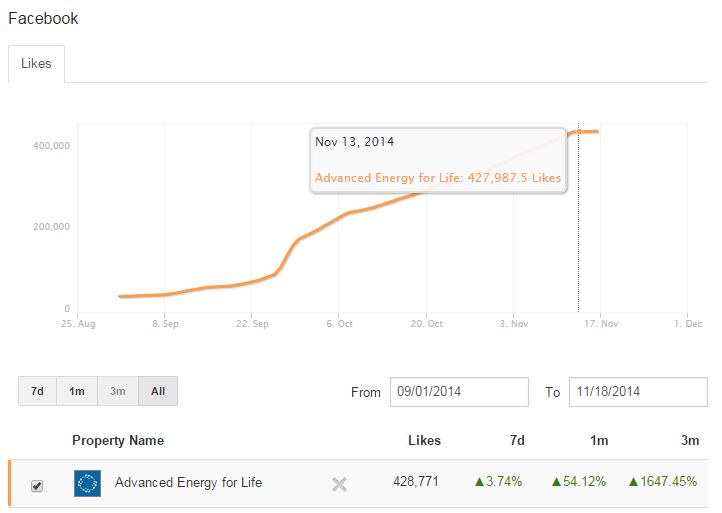With clean energy booming and the world increasingly acting to reduce carbon pollution, you don’t have to look very hard to see big coal is getting desperate. If you live in Australia you usually can’t turn around without seeing advertisments for the minerals industry, fossil fuel CEOs pushing its (usually hugely inflated) contribution to jobs and state coffers in the media, or (until recently at least) relentless optimism about the resources sector in the financial press.
No one spends money polishing their image in advertising and media unless it means more profits, more power, or a greater chance to hide something else inconvenient. But being someone who researches and writes on energy and climate change issues every day, I noticed something peculiar in late 2014.
A new social media campaign called “Advanced Energy for Life” (AEFL) kicked off earlier in 2014. It was immediately clear this was an opaque attempt to tie the use of burning coal with reducing poverty in the developing world (when it makes things worse). A project of the US company Peabody Energy, I investigated this greenwash attempt, as it came at the time Prime Minister Tony Abbott declared coal is “good for humanity”, and appeared to be gaining a lot of followers very quickly.
 Peabody is the world’s largest coal company, and it has seen its fortunes crash in recent years. With the help global PR giant Burson-Marsteller – infamous for its handling of the 1984 Union Carbide gas leak in Bhopal and its strong historical tobacco industry ties – it is now scrambling to rebrand its dirty product as “good for humanity” with AEFL.
Peabody is the world’s largest coal company, and it has seen its fortunes crash in recent years. With the help global PR giant Burson-Marsteller – infamous for its handling of the 1984 Union Carbide gas leak in Bhopal and its strong historical tobacco industry ties – it is now scrambling to rebrand its dirty product as “good for humanity” with AEFL.
Unfortunately for anyone who takes Peabody at its word, scratch the surface of this campaign and it is very clear that the overwhelming majority of its supporters appear to be bogus.
The company claimed at the G20 the campaign has prompted “500,000 people to lobby G20 leaders on the issue of energy poverty”.
By 500,000 people, Peabody means its approximately 430,000 Facebook Likes and 124,000 Twitter followers (As of today, 127k). From very small initial numbers its supporters suddenly exploded in volume – conveniently in the lead up to the G20, where Peabody was sponsoring a side event.
 On March 13 the AEfL Twitter account had 577 followers. This jumped to 5,028 a month later, then underwent jumps of 13,000, 85,000 and 21,000 on October 2, November 11, and 12 respectively. Its three month average reflects the surges. Peabody’s official Twitter account mirrors these unusual gains during the same period, and interestingly: the unusual growth for both accounts peaks on November 12 – the day Peabody hosted its event at the G20 summit – and start declining afterwards.
On March 13 the AEfL Twitter account had 577 followers. This jumped to 5,028 a month later, then underwent jumps of 13,000, 85,000 and 21,000 on October 2, November 11, and 12 respectively. Its three month average reflects the surges. Peabody’s official Twitter account mirrors these unusual gains during the same period, and interestingly: the unusual growth for both accounts peaks on November 12 – the day Peabody hosted its event at the G20 summit – and start declining afterwards.
Similarly, Peabody’s AEfL Facebook “Likes” for the past three months also show a similarly huge and unusual jump in support between August and November as its Twitter following. On August 31, the AEfL page had 24,537 likes, growing to 427,987 by November 13, when it, like the other accounts, suddenly stopped gaining consistently huge amounts of support.
The abnormally rapid increase during September and October 2014 is starkest when comparing it to Bjørn Lomborg’s Facebook page over the same period. Lomborg frequently writes articles and op-eds which share some of the views expressed in the AEfL campaign, and he was a presenter at the Peabody event at the Brisbane G20.
Despite being promoted by the AEfL campaign, talking on the same topics, and at the same events, Lomborg’s followers increased only very slightly over September, October and November. AEfL’s follower numbers exploded during the same period. By 17th November, the AEfL Facebook page had amassed 429,096 likes, while Lomborg’s Facebook page had only increased to 13,087 likes.
There a similarly large questions hanging over the quality and engagement of its followers, and the fact Peabody has nothing but tumbleweeds rolling through its tumbler posts, and only 17 Google+ followers again underlines the likely false support for its Facebook and Twitter accounts.
Companies buying likes or twitter followers to create the perception that they or their products are popular is a common, if useless and potentially embarrassing practice. However, the huge numbers of followers Peabody has gained appear to be bought to give the AEfL campaign credibility for lobbying, and the company social license to talk about poverty issues.
In reality, the only money Peabody appears to spend on the rural poor is what it spends talking about them on its website and social media channels. It spends $0 directly helping poor people. While other coal companies do help in small ways, ironically they do it by deploying renewable energy.
Of course, the company doesn’t appreciate being called out on this:
.@Peabodyenergy apparently doesn’t like people exposing its @advancedenergy astroturfing http://t.co/r0rVOg3nLl #Coal pic.twitter.com/UTeBVzm5mt — Greg McNevin (@gmcnevin) January 5, 2015
No amount of grassroot astroturfing can hide the fact that renewables, not coal, provide the fastest, most effective, and most affordable way to help the rural poor in developing nations. Burning more pollutants like coal will only worsen the health, extreme weather, sea level rise, and economic impacts on the rural poor.
Some coverage of this story to date if you want to read more:
- Big Coal Buys Facebook ‘Likes’ in Lame PR Stunt (EcoWatch)
- Big Coal’s “Fake” Social Media Campaign (Oil Change International)
- Coal Giant Peabody Energy Denies Social Media Poverty Campaign Is Bogus (Desmog)
- Big coal allegedly buys 500,000 social media followers — then denies it (Independent Australia)
- Peabody Coal Fakes Social Media Campaign To Pressure G20 Leaders (Popular Resistance)
- Coal giant exploits global poor to save its own hide (Grist)
- Has Peabody been fibbing about its G20 coal supporters? (Business Spectator [my original briefing])



